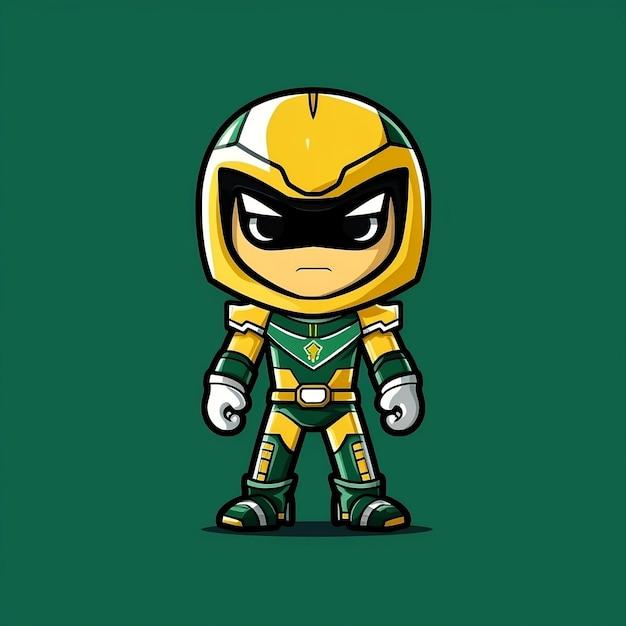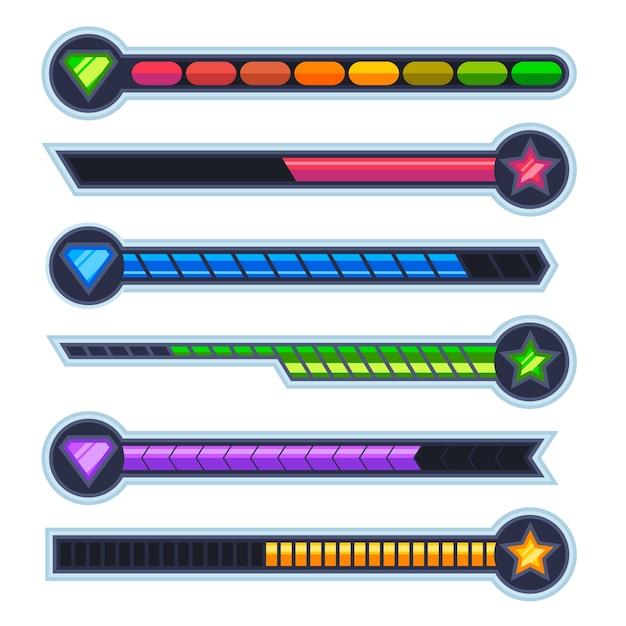Have you ever heard of ranger beads? These simple yet effective tools have been used for centuries by soldiers, hikers, and backpackers to keep track of their pace while on the move. Also known as pace count beads, ranger beads consist of a series of beads and knots that can help you keep track of distance traveled without the need for a GPS or other electronic device.
In this blog post, we’ll explore the history and purpose of ranger beads, provide a step-by-step guide on how to use them, and even show you how to make your own DIY ranger beads. We’ll also introduce you to other useful paracord beads and a bead calculator to help you work out your pace more accurately. So, whether you’re an experienced outdoorsman or just starting out on your hiking journey, read on to learn everything you need to know about ranger beads!
How Ranger Beads Keep You from Losing Your Way on the Trail
Are you tired of getting lost on the trail, even though you’ve marked every rock and tree with colorful ribbons? It’s time to upgrade your hiking accessory game with Ranger Beads. These nifty little tools keep track of your progress and prevent you from aimlessly wandering around the woods like a lost puppy.
What Are Ranger Beads
Ranger Beads are a simple, yet effective navigation tool used by hikers, survivalists, and military personnel. They consist of a string of beads, usually 9 or 13, separated by knots or other markings. They’re used to count paces, estimate distances, and keep track of travel progress.
How to Use Ranger Beads
Using Ranger Beads is easy peasy. Before you hit the trail, measure out a specific distance, say 100 meters, and count your paces while moving that distance. Then, slide one of the beads forward or backward on the string to mark the distance. Continue this process until you reach your destination or desired stopping point.
Advantages of Using Ranger Beads
The benefits of using Ranger Beads go beyond preventing you from getting lost. Here are some advantages to consider:
1. They’re Lightweight and Compact
Ranger Beads are small and lightweight, making them easy to carry in your pack or attach to your gear. You won’t even notice them until you need to use them.
2. They’re Accurate and Reliable
Unlike other navigation methods, such as GPS or visual markers, Ranger Beads don’t rely on batteries or good eyesight. You can count on them to be accurate and reliable in any weather condition.
3. They’re Fun and Practical
Let’s be real. Who doesn’t love a good outdoor gadget? Ranger Beads are not only practical but also fun to use. You’ll feel like a seasoned navigator as you track your progress and crush your hiking goals.
In summary, Ranger Beads are an essential tool for anyone who loves the great outdoors. They keep you on track, prevent you from getting lost, and add a bit of fun to your hiking experience. So next time you hit the trail, don’t forget to pack your Ranger Beads and get ready to navigate like a pro!
Ranger Beads: The Ultimate Paracord Accessory
If there’s one thing you learn as an avid outdoors person, it’s that being prepared is key. And when it comes to navigating through dense forests or tricky terrain, having a reliable set of ranger beads is a game-changer. But have you ever considered taking your ranger bead game to the next level? That’s where paracord beads come in.
What are Paracord Beads
Paracord beads are essentially just small decorative beads designed to be threaded onto paracord. But, believe it or not, they can actually serve a functional purpose in addition to looking cool. Paracord beads can help to add weight to your ranger beads, which can make them easier to use and manipulate without looking— or feeling— like a total doofus. Plus, they add an extra level of customization and style to your gear.
Adding Some Flair
One of the best things about paracord beads is that they come in a wide variety of shapes, colors, and designs. Whether you’re into skulls, animals, or abstract art, there’s bound to be a paracord bead for you. And if you’re feeling extra adventurous, you can even make your own paracord beads with a little bit of know-how and some basic craft supplies.
Functional or Fashionable
The debate over whether paracord beads are simply a fashion statement or a functional addition to your ranger beads is one that’s been ongoing for years. Some outdoors enthusiasts argue that adding beads to your ranger beads can actually be counterproductive, as they can get caught on branches or other obstructions. However, others swear by the added weight and style that paracord beads bring to the table. Ultimately, the decision of whether or not to add paracord beads to your ranger beads is up to you— just be sure to consider the pros and cons before jumping in.
At the end of the day, whether you’re a die-hard survivalist or just enjoy spending time in the great outdoors, having a reliable set of ranger beads is a must. And if you’re looking for a way to add some extra flair and functionality to your setup, paracord beads might just be the answer you’ve been looking for. So go ahead, unleash your creativity, and don’t be afraid to try something new. Who knows— you might just discover your next favorite gear hack.
Bead Calculator
If you’re like most people, math isn’t your favorite subject. And when it comes to counting beads on your ranger beads, it can be a daunting task. Luckily, there are bead calculators to help you out!
What is a Bead Calculator
A bead calculator is a handy tool that helps you determine the distance covered based on the beads on your ranger beads. It’s a simple tool, where you input the number of beads on your ranger beads, and it calculates the distances for you.
How Does It Work
Using a bead calculator is super simple. All you have to do is enter the number of beads on your ranger beads, and the size of your stride. The calculator then does the rest of the work for you, providing you with the distance covered.
Why Use a Bead Calculator
Using a bead calculator takes the guesswork out of tracking your distance. It’s a quick and easy way to ensure that you’re accurately measuring your progress. Plus, it saves you the headache of having to do math in your head!
So, the next time you’re out on the trail with your ranger beads, don’t forget to bring your bead calculator along. Your brain will thank you, and you’ll be one step closer to your hiking goals!
Pace Count Beads
Pace count beads are another tool that helps hikers, backpackers, and other adventurers measure the distance they have covered. Unlike ranger beads that help users count the number of steps they have taken, pace count beads enable the user to measure the distance they have covered after taking a set number of steps. These beads have become increasingly popular among hikers and backpackers who want to track their progress accurately while trekking through the wilderness.
How Do Pace Count Beads Work
Pace count beads work based on the counting principle. They consist of a string with a set of beads attached. Usually, there are nine beads on the string, and once users take a certain number of steps, they pull one of the beads down to another one to mark that they have completed one unit of distance. The distance unit is typically either yards or meters, depending on the user’s preference.
Why Are Pace Count Beads Useful
Pace count beads are useful for hikers and backpackers because they allow them to know the distance they have covered accurately. This information can be incredibly beneficial in cases where there are no landmarks or other methods of tracking the distance covered. Pace count beads are also helpful for people who want to ensure they stick to a predetermined timeline. By knowing the distance covered, hikers can estimate the time it will take them to reach their destination and plan accordingly.
Tips for Using Pace Count Beads
Using pace count beads is relatively simple, but it requires some practice first. Here are a few tips for hikers and backpackers who want to start using pace count beads:
-
Start small by taking ten steps and marking the bead. Measure the distance and see if you got it right.
-
Once you get comfortable with the process, adjust the number of steps to suit your stride length.
-
Practice on different terrains, slopes, and conditions to get a better idea of how the beads work.
-
Ensure that the beads are easily accessible and that you can count them quickly.
-
Remember to reset the beads to zero every time you start a new journey.
In conclusion, pace count beads are an essential tool for hikers, backpackers, and anyone who needs to measure the distance covered accurately. By following the tips mentioned above, users can harness the full benefits of pace count beads and enjoy their adventures without the worry of getting lost or going off-track.
Crafting Your Own Ranger Beads: A DIY Guide
Ranger beads don’t have to be bought from a store. In fact, DIY ranger beads can be an enjoyable and satisfying project. Here are some easy instructions to get you started.
Materials
First, gather your materials. You will need:
- Paracord
- Two large beads for the “counting” beads
- Eight smaller beads for the “divider” beads
- Scissors
- Lighter
Instructions
-
Cut a length of paracord to about 18 inches. You can always trim it later if needed.
-
Take one of the large beads and thread it onto the paracord. Tie a knot to secure the bead in place.
-
Thread on one of the smaller beads, leaving about an inch of paracord between the large and small beads. Tie a knot after the small bead to keep it in place.
-
Repeat step 3, so you now have two smaller beads on the paracord.
-
Thread on two more smaller beads, but don’t tie a knot. These are your “divider” beads.
-
Repeat step 3 until you have four more sets of two smaller beads and two “divider” beads.
-
Finally, thread on the last large bead and tie a knot to secure it in place.
-
Congratulations, you’ve made your very own ranger beads!
Tips & Tricks
- Don’t be afraid to experiment with different bead sizes and colors.
- If the beads keep slipping around, adding a drop of glue to the knot can help hold it in place.
- If you’re feeling extra creative, try adding decorative knots or tassels to your ranger beads.
Now that you’ve created your own ranger beads, you’re ready to hit the trail and keep track of your distance like a pro. Happy hiking!
The Pace Counter Bracelet: A Must-Have for Hikers
If you’re planning a long hike in the wilderness, it’s important to be mindful of your pace and know how far you’ve travelled. While ranger beads can help keep track of distance, sometimes it’s easier to have a more visual representation. Enter the pace counter bracelet.
What is a Pace Counter Bracelet
A pace counter bracelet is just what it sounds like: a bracelet with a built-in counter that you can use to keep track of your pace as you hike. Each time you take a step, you slide a bead on the bracelet. After a certain number of steps, you know you’ve gone a certain distance.
How to Use a Pace Counter Bracelet
Using a pace counter bracelet is easy. Before you start your hike, decide how many steps you want to take before you slide a bead on the bracelet. This number will vary depending on your stride length and the terrain you’re hiking on. We recommend starting with 100 steps to start and adjust as needed.
Once you have decided the number of steps per bead, you’re ready to start hiking and counting your steps. When you’ve taken the required number of steps, slide a bead on the bracelet. Each set of beads typically indicates a specific distance (e.g., 1000 steps for one kilometer), so you can keep track of how far you’ve travelled.
Benefits of Using a Pace Counter Bracelet
A pace counter bracelet is not only a great way to keep track of distance; it’s also a great tool for maintaining a consistent pace. By counting your steps and keeping a steady pace, you can avoid burning out too quickly, get to your destination faster, and, most importantly, avoid getting lost.
Final Words
In conclusion, a pace counter bracelet is an affordable and essential tool that every hiker should consider investing in. It will help you stay on track during long hikes and give you peace of mind knowing you can keep track of your progress. So next time you plan a hike, make sure you have one of these handy bracelets in your backpack, and you’ll be ready to take on any trail.
How to Use Army Ranger Beads
If you’re in the military or an outdoor enthusiast, there’s a good chance you’ve heard of Army ranger beads. These simple tools are popular among soldiers and hikers alike as a way to keep track of distance traveled without relying on a GPS or other electronic devices. So how exactly do you use these little beads? Let’s dive in and find out!
What Are Ranger Beads
Before we get into the nitty-gritty of using ranger beads, let’s make sure we’re all on the same page about what they actually are. Essentially, ranger beads are a tool for measuring distance on foot. They consist of a length of cord with one or more beads on it, as well as a few extra pieces (usually a knot or two) at either end. They’re lightweight, compact, and incredibly useful for anyone who needs to keep track of distance traveled.
Step 1: Determine the Distance
The first step in using ranger beads is to figure out the distance you want to measure. For example, if you’re hiking a trail that’s three miles long, you’ll want to set your ranger beads to three miles. This is usually done by sliding one of the beads up the cord until it hits a knot, which represents one mile.
Step 2: Start Walking
Once you’ve set your ranger beads to the correct distance, it’s time to start walking. As you walk, move one of the beads down the cord for each 100 meters (or whatever distance you want to measure). For example, if you’re using ranger beads to measure three miles, you’ll move one of the beads down for every 100 meters you walk until you’ve moved it a total of 30 times (since there are 1,609 meters in a mile).
Step 3: Reset and Repeat
Once you’ve moved the first bead down 30 times, you’ll reach the end of your three-mile hike (congratulations!). At this point, you’ll need to reset your ranger beads by sliding the first bead back up the cord until it hits the knot again. Then, move the second bead down one notch to represent the first mile of your next hike. Repeat the process from step two until you reach your next destination.
Using ranger beads may seem a bit confusing at first, but with a little bit of practice, it becomes second nature. Plus, it’s a great way to stay connected to the land and the trail while keeping your eyes off your phone or GPS. So next time you hit the trail, give ranger beads a try—you just might find that you prefer them to the fancy electronic gadgets!
The Purpose of Ranger Beads
If you’re in the military or an outdoors enthusiast, you’ve likely come across ranger beads before. If not, let me break it down for you. Ranger beads are a set of beads on a string, and they serve a specific purpose that can be a real lifesaver out in the field.
Counting Distance Traveled
The primary purpose of ranger beads is to help you count your distance traveled. For those who have ever tried navigating through the wilderness using only a map and compass, you know that it can be tough to determine how far you’ve trekked. Ranger beads can help you keep track of your distance traveled by counting your paces.
Conserving Battery Life
Sure, you may have a fancy GPS system that can track distances and routes for you. But what happens when your battery dies? That’s where ranger beads come in handy. You don’t need any battery or charging for your ranger beads. All you need is the ability to count your steps.
Keeping Track of Time
Here’s where things get interesting. You can also use ranger beads to keep track of time. For example, if you know your pace takes about one minute to walk a certain distance, and it takes you ten steps to travel that distance, you can use your ranger beads to count ten minutes. This feature is particularly useful if you’re on a time crunch and can’t stop to check your watch or phone.
Fun Tip
Lastly, here’s a fun fact about ranger beads. If you’re the type of person who gets easily bored on long hikes, you can use your ranger beads as a makeshift fidget device. You can slide the beads back and forth on the string and create various patterns. Just try not to get too distracted and lose count of your steps!
In conclusion, ranger beads have many practical uses for military personnel and outdoor enthusiasts alike. They’re a reliable, low-tech tool that can help you navigate through challenging terrain and keep track of time. Plus, they can even double as a source of entertainment on long hikes. Who knew a simple string of beads could be so versatile?



